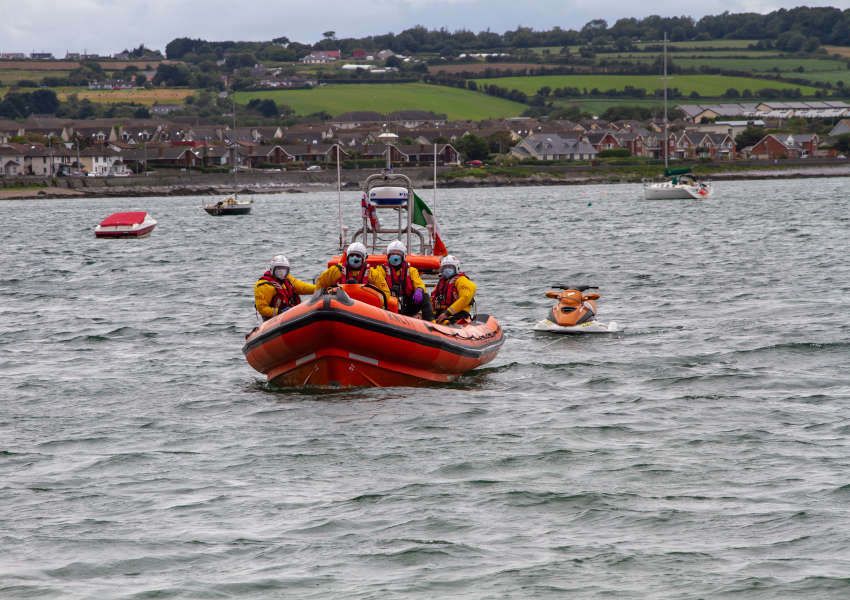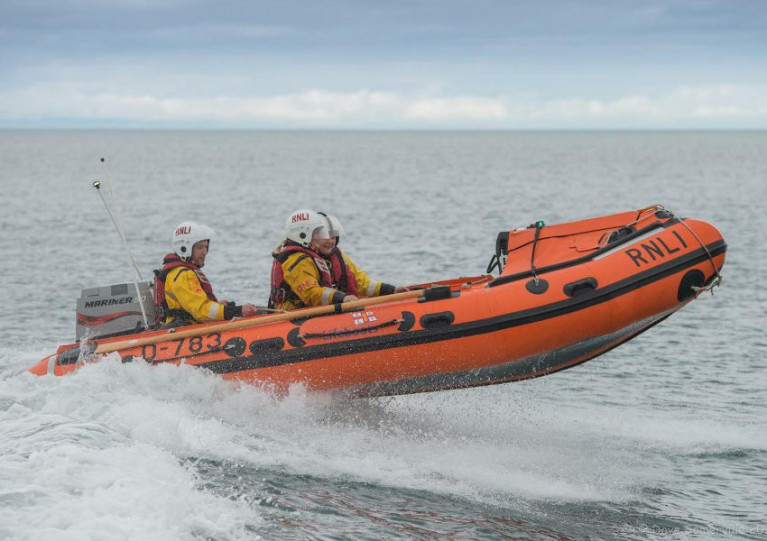Larne RNLI rescued a jet skier who had fallen into the water off the Co Antrim coast and couldn’t get back onto his craft.
The volunteer crew launched the in-shore lifeboat Terry just after 8pm on Tuesday evening and reached the casualty just north of Tweeds Port slipway within minutes.
The man, who had been in the water for 30 minutes, was recovered into the lifeboat and checked to make sure he wasn’t suffering from his time in the water.
He was then brought back to shore at Tweeds Port and handed over to the care of the NI Ambulance Service. The lifeboat crew then returned to the water to recover the jet ski.
Philip Ford-Hutchinson, Larne RNLI’s deputy launching authority, said: “The casualty was lucky as cold water shock can set in when you are submerged for any amount of time and in any season. Please, when using the water, respect the water.”
Elsewhere, Skerries RNLI had a busy start to the week as they responded to two separate callouts within two hours.
 Skerries RNLI towing a broken-down jet ski ashore | RNLI/Gerry Canning
Skerries RNLI towing a broken-down jet ski ashore | RNLI/Gerry Canning
The lifeboat first launched on Sunday (26 July) shortly after 2pm to return two men on a jet ski safely back to shore after they suffered mechanical difficulties off Colt Island.
Then just two hours later the volunteers were called upon alongside the Irish Coast Guard helicopter Rescue 116 and Skerries coastguard unit to carry out a search for a swimmer in distress in the same area, between Colt Island and St Patrick’s Island.
Following a thorough search, and the crew speaking to numerous kayakers in the area, Dublin Coast Guard was satisfied that it was a false alarm with good intent and the helicopter and lifeboat were stood down.
Speaking later, volunteer lifeboat press officer Gerry Canning said: “It’s days like this that you really see the dedication of our volunteer crews.
“Some of them were still on the harbour following the first call out when their pagers sounded the second time. This meant that we could launch quite quickly to what was potentially a serious incident. Thankfully in both cases it was a good outcome.”
































































